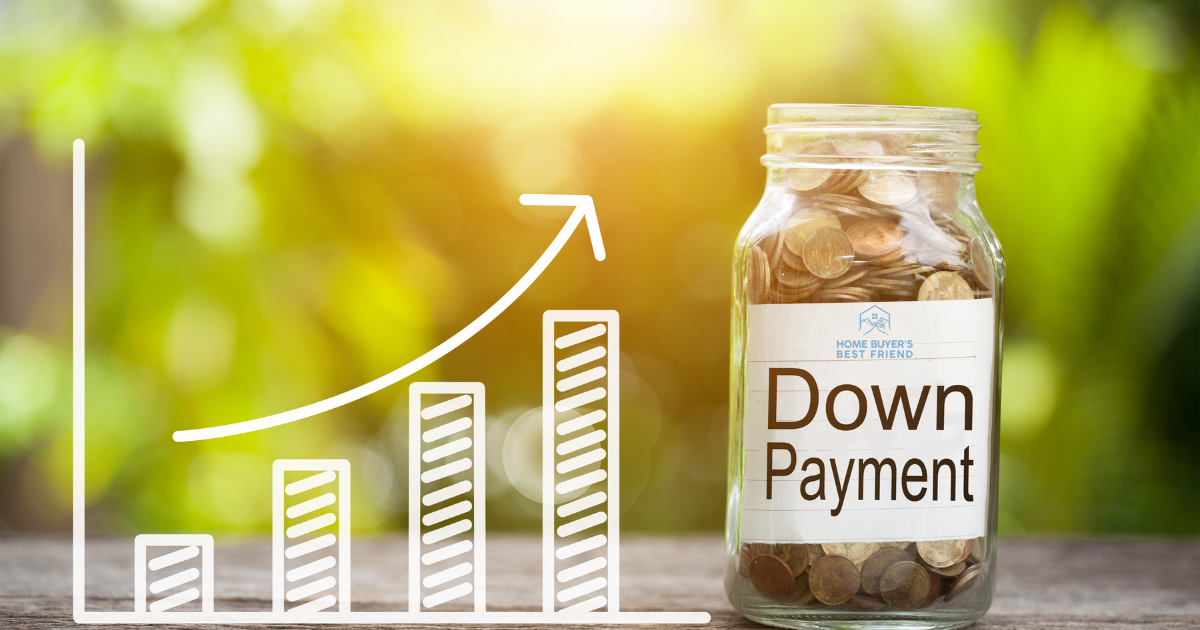
The transition from renting to owning is one of the most exciting phases of adult life. Owning your first home promises stability, freedom, and the opportunity to build equity. When you mention buying a house, the first thing that comes to mind is the downpayment. A down payment is a significant upfront payment made towards the purchase price of a home, mostly expressed as a percentage of the total cost.
So, how much downpayment should you budget for? How do you go about saving for this payment? This article demystifies downpayment for first-time home buyers by empowering them with the right information for decision-making.
The Power of a Down Payment
Saving for a down payment demonstrates financial responsibility and commitment to homeownership. A larger down payment can positively impact your mortgage terms, interest rates, and monthly payments.
The minimum down payment depends on the type of mortgage you plan to apply for to purchase a home. Conventional loans might require a downpayment as low as 3%, but such loans come with higher interest rates and tougher requirements.
By saving for a down payment, you can secure better mortgage options and reduce the amount you need to borrow. Additionally, a substantial down payment can help you avoid private mortgage insurance (PMI), an additional cost that lenders may require when your down payment is less than 20% of the home’s value.
Understanding the Concept of a Down Payment
Commitment to Homeownership
A down payment acts as your initial investment in the property and demonstrates your commitment to the purchase. The down payment is deducted from the total purchase price, and the remaining amount is financed through a mortgage loan.
Down Payment Percentage
The down payment is typically a percentage of the home’s purchase price. The percentage required can vary depending on several factors, including the type of mortgage loan, your creditworthiness, and the lender’s requirements.
When navigating the mortgage process, consider the down payment required by different lenders. A 20% or more down payment is recommended to secure favorable loan terms and avoid additional costs. The more you save for a house, the better the mortgage rates.
The Impact on Loan-to-Value Ratio
The amount of a down payment also affects the loan-to-value (LTV) ratio. This is the ratio of the loan amount to the appraised value of the property. A higher down payment results in a lower LTV ratio, improving your chances of obtaining a mortgage and lowering your interest rates.
Impact on Monthly Repayments
With a higher down payment on your first home, you’ll relieve yourself of the stress of high monthly repayments. If you can save more to buy your home, you’ll enjoy more peace of mind during the loan term.
Factors that Affect the Required Down Payment Amount
- Home Price
The higher the home price, the larger the down payment required. As a first-time home buyer, consider your budget and the affordability of the home before committing to a particular property.
- Loan Type
Different loan types have varying down payment requirements. For example, conventional loans typically require a higher down payment than government-backed loans, such as FHA or VA. Compare different loan types and understand the requirements for each loan to help determine the necessary savings for your down payment.
- Creditworthiness
Your creditworthiness plays a role in the down payment amount required by lenders. With a higher credit score (generally above 740), you’ll enjoy a lower down payment because this reflects lower risk for the lender. Conversely, a lower credit score leads to a higher down payment to mitigate perceived risk. Don’t let your credit score hold you back from homeownership. Start repairing your credit score early enough for favorable credit facilities.
- Debt-to-Income Ratio (DTI)
How much debt are you already servicing from your income? Debt The debt-to-income ratio compares your monthly debt payments to your gross monthly income. A lower DTI translates to a lower down payment requirement. A higher DTI indicates increased risk for the lender, which triggers a higher down payment demand.
How Much Should You Save for Your First Home’s Down Payment?
Set a Savings Goal
Evaluate your financial situation by considering your desired home price and understanding the down payment requirements of your chosen loan type. Aim to save at least 20% of the home’s purchase price to maximize your options and minimize costs.
Calculate Your Savings Timeline
With your savings goal in place, create a realistic timeline. Consider your current income, monthly expenses, and potential sources of additional savings. You can track your progress and stay motivated by breaking down your savings goal into manageable monthly or annual targets.
Automate Your Savings
For consistent progress towards your down payment goal, consider automating your savings. Set up automatic transfers from your checking account to a separate savings account dedicated to your down payment. This approach eliminates the temptation to spend the money and ensures that you consistently contribute towards your goal.
Tips for Saving for a Down Payment
- Create a Budget
Establishing a budget is the first step in saving for a down payment. Evaluate your income and expenses, and identify areas where you can cut back or save more. By tracking your spending and adhering to a budget, you can allocate more funds towards your down payment savings.
- Reduce Debt
Reduce your debt burden to free up additional funds for your down payment savings. Consider paying off high-interest credit card debt or consolidating multiple debts into a manageable payment. By minimizing your debt obligations, you can redirect more money towards your savings.
- Increase Your Income
Explore opportunities to increase your income to expedite your down payment savings. Consider taking on a side job, freelancing, or pursuing additional educational or professional development opportunities that can lead to higher-paying positions. The extra income earned can be dedicated towards your down payment savings.
Exploring Down Payment Assistance Programs
Government Programs
Government down payment assistance programs help first-time homebuyers overcome financial barriers. These programs can provide grants, low-interest loans, or tax credits to eligible individuals. Talk to your real estate agent, research the available programs in your area, and determine if you qualify for these valuable resources.
Employer Benefits
Some employers offer down payment assistance as part of their employee benefits package. This can include employer-matched savings programs or direct financial assistance towards a down payment. Explore whether your employer offers homeownership-related benefits and take advantage of these opportunities to accelerate your savings.
Non-Profit Organizations
Non-profit organizations and community development agencies may also offer down payment assistance programs. These programs are often tailored to specific demographics or geographic areas, so it is essential to research the available options in your region. Reach out to local organizations for guidance and support in navigating these programs.
Alternative Options for First-Time Homebuyers with Limited Savings
Low Down Payment Loans
If saving for a sizable down payment seems unattainable, loan options that require lower down payments are available. FHA loans, for example, may only require a down payment as low as 3.5% of the home’s purchase price. However, it is crucial to consider the potential trade-offs, such as higher mortgage insurance premiums or stricter qualification criteria.
Co-Buying or Co-Ownership
Another alternative for first-time homebuyers with limited savings is co-buying or co-ownership. This involves partnering with a trusted friend or family member to pool resources and purchase a home together. By sharing the down payment and other expenses, you can overcome financial barriers and enter the housing market sooner.
Rent-to-Own Programs
Rent-to-own programs offer a pathway to homeownership for individuals who may not qualify for traditional mortgages or have limited savings. These programs allow you to rent a property with the option to purchase it later. A portion of your monthly rent is typically credited towards the down payment or purchase price, helping you build equity over time.
Next Steps for Aspiring Homeowners
Homeownership is at the core of the American Dream, and of course, it’s a personal milestone that comes with lots of pride. With an understanding of how the down payment affects homeownership, you’re a step closer to that first home. Leverage these tips for saving your down payment, explore down payment assistance programs, and consider alternative options to achieve your dream of homeownership.
Take the next step towards your goal by enrolling in the best first-time home buying course in town. This course will equip you with the knowledge and tools to navigate the home-buying process successfully. Take advantage of this invaluable opportunity to make your homeownership dreams a reality!
